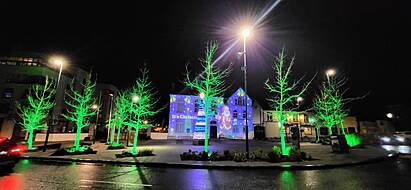Girls Aloud star Sarah Harding said in August 2020 that she had been diagnosed with breast cancer earlier in the year.
Here is some information about breast cancer in Ireland.
How many people are diagnosed with breast cancer each year?
More than 3,600 women and around 37 men are diagnosed with breast cancer each year in Ireland, according to the Irish Cancer Society.

The number of breast cancer cases is on the increase, according to the Marie Keating foundation.
Breast cancer is the second most common cancer in women in Ireland, with skin cancer being the most common. One in seven women will be diagnosed with breast cancer in their lifetime.
What are the survival odds of someone diagnosed?
Breast cancer, when caught early, has the highest five year net survival rate of 85 per cent, according to the Marie Keating foundation.
Breast cancer survival rates are continuing to increase each year, the foundation says.
However, every year 724 people die from the disease in Ireland.
What are the symptoms?
The first noticeable symptom is usually a lump or area of thickened breast tissue.
Most breast lumps are not cancerous, but it is always best to have them checked by a doctor.
Breast pain is not usually a symptom of breast cancer, but there are a number of other symptoms.
People are advised to see a GP if they notice any of these symptoms:
- A change in the size or shape of one or both breasts;
- Discharge from either nipple, which may be streaked with blood;
- A lump or swelling in either armpit;
- Dimpling on the skin of the breasts;
- A rash on or around the nipple;
- A change in the appearance of the nipple, such as becoming sunken into the breast.
What are the causes of breast cancer?
The exact causes of breast cancer are not fully understood.
However, certain factors are known to increase the risk of breast cancer. These include age, a family history of breast cancer, a previous diagnosis of breast cancer, a previous non-cancerous breast lump, being tall, overweight or obese, and drinking alcohol.
What are the treatments?
There are a range of different treatment options for breast cancer including surgery, chemotherapy, radiotherapy, hormonal therapy, or targeted cancer drugs.
Doctors work out the best treatment plan for each patient and sometimes this can involve a combination of different treatments.
In August 2020, Sarah Harding said her cancer had “advanced” to other parts of her body. What does that mean?
Advanced breast cancer means the cancer has spread to another part of the body.
Treatments aim to control the growth of the cancer and help to control symptoms. Treatments might include hormone therapy, chemotherapy, radiotherapy, or targeted cancer drug therapy.
Advanced breast cancer can spread to other parts of the body such as the liver, lungs, lymph nodes, brain or bones.
Sometimes cancer is advanced when it is first diagnosed, or the cancer has come back and spread after treatment for the original cancer.
Advanced cancer can also be called secondary cancer, metastases or metastatic cancer.
Locally advanced cancer means that the cancer has spread into the tissues around the breast. It has not spread to other organs. It is different from an advanced cancer.
Is there more than one type of breast cancer?
There are several different types of breast cancer, which develop in different parts of the breast.
Non-invasive breast cancer (carcinoma in situ) is found in the ducts of the breast which has not spread into the breast tissue surrounding the ducts. This type of cancer is usually found during a mammogram and rarely shows as a breast lump.
Invasive breast cancer is where the cancer cells have spread through the lining of the ducts into the surrounding breast tissue. This is the most common type of breast cancer.
Other, less common types of breast cancer include invasive (and pre-invasive) lobular breast cancer, inflammatory breast cancer, and Paget’s disease of the breast.
Breast cancer can spread to other parts of the body, usually through the blood or the axillary lymph nodes – small lymphatic glands that filter bacteria and cells from the mammary gland.
If this happens, it is known as secondary, or metastatic, breast cancer.







